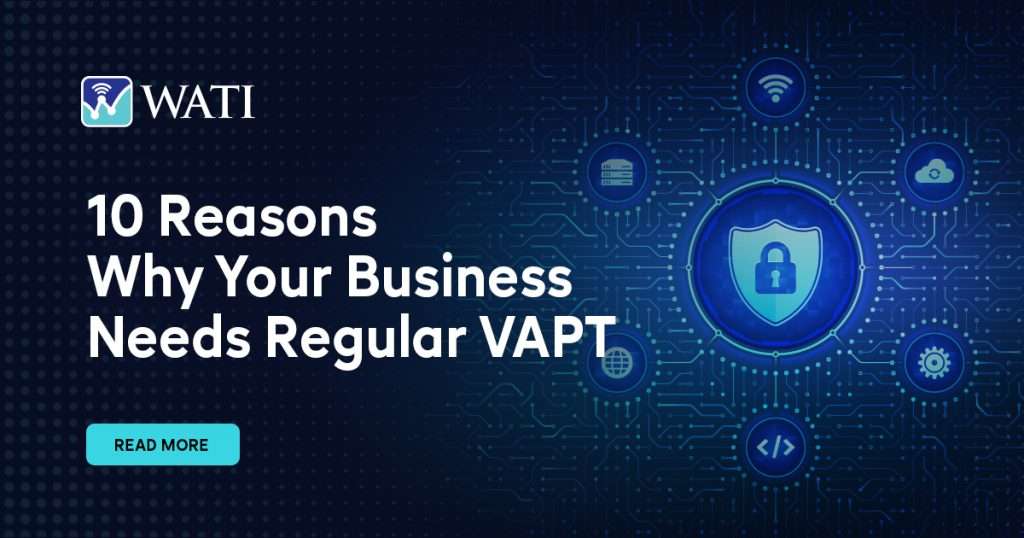Product security has become a cornerstone of success for modern tech companies. From SaaS applications and IoT devices to cloud-based enterprise platforms, digital products form the backbone of innovation. However, as products become more connected and complex, they also become more exposed to cyber threats.
According to industry reports, over 60% of security breaches originate from vulnerabilities in products or third-party software components. Attackers are targeting weak APIs, insecure dependencies, and unpatched cloud configurations — making product security not just a technical priority, but a strategic one.
For today’s tech leaders — CTOs, CISOs, and product heads — product security services are no longer optional. They are essential for protecting intellectual property, ensuring compliance, and maintaining customer trust.
What Is Product Security?
Product security refers to the collection of processes, tools, and strategies used to protect software, hardware, infrastructure, and dependencies throughout the entire product lifecycle — from design and development to deployment and maintenance.
Unlike traditional IT security, which focuses on safeguarding networks or endpoints, product security focuses on building resilience directly into the product itself. It ensures that applications, APIs, and systems are secure by design and remain protected as they evolve.
In essence, product security is about embedding security within innovation — allowing teams to build quickly without compromising protection.
Core Principles of Product Security
Effective product security relies on a few foundational principles that guide every phase of the development process:
- Security by Design: Security must be integrated from the very first design discussion — not added as an afterthought.
- Defense in Depth: Multiple layers of protection ensure that even if one control fails, others can mitigate the impact.
- Least Privilege: Users, processes, and systems should have only the access they need, nothing more.
- Continuous Monitoring: Security is an ongoing process — regular assessments and visibility help detect emerging threats early.
- Automation and Scalability: Leveraging DevSecOps ensures security controls scale seamlessly with product growth.
The Product Security Lifecycle: A Step-by-Step Overview
Product security is not a one-time activity; it is a continuous lifecycle that evolves with your product and threat landscape.
1.Design Phase: Building Security Foundations
During the design stage, teams identify potential attack surfaces through threat modeling. This helps visualize how an attacker might exploit vulnerabilities and allows architects to plan robust defenses early.
Techniques like security architecture reviews ensure the design meets compliance and resilience standards before coding even begins.
2.Development Phase: Secure Coding and DevSecOps
Developers are on the front lines of product security. By implementing secure coding practices and using automated testing tools like Static Application Security Testing (SAST), they can prevent vulnerabilities from being introduced into the codebase.
Integrating security into CI/CD pipelines — the hallmark of DevSecOps — ensures that every new feature or update undergoes automated checks without slowing development velocity.
3.Testing Phase: VAPT, DAST, and Red Teaming
Before deployment, products must undergo rigorous testing using Vulnerability Assessment and Penetration Testing (VAPT), Dynamic Application Security Testing (DAST), and Red Teaming exercises. These methods simulate real-world attack scenarios to identify weaknesses that automated scanners might miss.
A cybersecurity services company typically provides these specialized assessments to validate the product’s defense readiness.
4.Deployment Phase: Configuration and Hardening
Once ready for production, products should be deployed with hardened configurations — minimizing exposed ports, enforcing encryption, and implementing access controls. Infrastructure as Code (IaC) security ensures consistency and reduces misconfiguration risks.
5.Maintenance Phase: Continuous Monitoring and Patch Management
After launch, continuous monitoring and rapid patch management become essential. Security teams must monitor logs, analyze threat intelligence, and respond to incidents in real time to ensure ongoing protection.
Product Security Main Components
Product security includes the processes, tools, and strategies used to protect software, infrastructure, and dependencies across the entire development lifecycle. Given the complexity of modern development, it requires cross-functional collaboration between security, development, and operations teams to ensure security is seamlessly integrated without slowing down innovation.
Let’s explore how these teams work together to build, maintain, and deploy secure software.
1.Integrating Security Into the SDLC
Security must be embedded at every stage of the Software Development Lifecycle (SDLC) to prevent vulnerabilities from reaching production. This means incorporating secure coding practices, automated testing, and developer-friendly controls directly into CI/CD workflows.
By working closely with developers and DevOps engineers, product security teams can ensure security doesn’t become a bottleneck but rather a core enabler of scalability and trust.
2.Supply Chain Security
Modern software relies heavily on third-party code, open-source libraries, and APIs, making the software supply chain a major attack vector. Attackers exploit vulnerabilities in dependencies to infiltrate systems — as seen in high-profile incidents like SolarWinds and Log4j.
Mitigating these risks involves maintaining an accurate Software Bill of Materials (SBOM), monitoring open-source vulnerabilities, and enforcing strict dependency management policies. Regular supply chain risk assessments are also critical to ensuring visibility and control.
3.Enforcing Compliance
Security is no longer optional; it’s a regulatory mandate. Frameworks like ISO 27001, SOC 2, HIPAA, and GDPR require organizations to implement robust product security controls.
Product teams must collaborate with compliance and legal teams to automate policy enforcement, maintain audit trails, and ensure continuous compliance through monitoring and reporting tools.
4.Threat Modeling and Risk Assessment
Threat modeling helps identify how potential attackers could target your system. It involves mapping out data flows, access points, and attack surfaces, and then prioritizing mitigations based on risk levels.
By incorporating threat modeling early, developers and security engineers can proactively address risks — turning reactive defense into predictive protection.
Security cannot be a “final step” — it must be continuous. Integrating automated SAST, DAST, and SCA (Software Composition Analysis) tools into development pipelines ensures constant scanning for vulnerabilities.
In addition, manual penetration testing and red teaming provide deeper insights into real-world exploitation methods, validating that your automated defenses truly work.
6.Vulnerability Management
Even the best products are not immune to vulnerabilities. Effective vulnerability management requires constant monitoring, rapid patching, and risk-based prioritization.
Security teams should track vulnerabilities across custom code, third-party libraries, and cloud infrastructure. Using automation tools for detection and response helps ensure faster remediation and minimizes exposure windows.
Key Components of an Effective Product Security Framework
Building a strong product security framework involves a mix of strategy, process, and technology.
- Risk Assessment and Prioritization: Identifying, categorizing, and addressing risks based on potential business impact.
- Secure Development Practices: Incorporating coding standards, code reviews, and automated scanning.
- Vulnerability Management Program: Continuous detection and patching of security flaws.
- Compliance and Governance: Aligning with ISO, SOC, NIST, GDPR, and other frameworks.
- Incident Response Planning: Defining processes for rapid detection and containment of security incidents.
- Security Automation: Leveraging AI and automation to accelerate detection, testing, and remediation.
Product Security vs Application Security: What’s the Difference?
Although often used interchangeably, product security and application security serve different purposes.
- Application Security focuses primarily on safeguarding individual applications from threats like SQL injection or cross-site scripting.
- Product Security takes a holistic view — protecting the entire ecosystem that powers a product, including APIs, data stores, firmware, and integrations.
Tech companies need both: application security ensures code-level protection, while product security guarantees end-to-end resilience and compliance.
Common Product Security Threats Facing Tech Companies
Tech companies face a constantly evolving threat landscape. Some of the most common include:
- Supply Chain Attacks: Compromising third-party dependencies or CI/CD pipelines.
- Insecure APIs: Poor authentication or authorization mechanisms.
- Cloud Misconfigurations: Unprotected storage buckets, weak IAM policies.
- Zero-Day Vulnerabilities: Exploited before patches become available.
- IoT and Firmware Attacks: Targeting connected devices with weak encryption.
- Insider Threats: Unintentional or malicious misuse of privileged access.
Addressing these threats requires layered defense, continuous monitoring, and proactive red teaming to stay ahead of adversaries.
How Cybersecurity Services Strengthen Product Security
Partnering with a cybersecurity services company brings specialized expertise and advanced tools to your product security strategy. Here’s how:
- Comprehensive Risk Assessment: Identify vulnerabilities across software, hardware, and supply chains.
- VAPT and Red Teaming: Simulate real-world attacks to uncover exploitable weaknesses.
- DevSecOps Enablement: Integrate security automation within CI/CD pipelines for scalability.
- Compliance Consulting: Ensure adherence to ISO, SOC 2, and GDPR standards.
- Managed Security Services: Continuous monitoring, threat detection, and incident response.
By combining proactive testing with continuous improvement, cybersecurity partners help tech companies achieve secure innovation without sacrificing agility.
Tools and Technologies for Product Security
Modern product security strategies leverage a wide range of tools:
- SAST (Static Application Security Testing) — Detects vulnerabilities in source code early.
- DAST (Dynamic Application Security Testing) — Scans running applications for runtime vulnerabilities.
- SCA (Software Composition Analysis) — Identifies risks in open-source dependencies.
- SIEM (Security Information and Event Management) — Monitors logs for anomalies.
- Threat Intelligence Platforms — Tracks emerging global threats.
- Container Security Tools — Protects containerized environments like Docker and Kubernetes.
These technologies, when integrated into a broader product security framework, create a resilient, scalable security posture.
Best Practices for Implementing Product Security
- Shift Left: Embed security from the earliest design phase.
- Adopt DevSecOps: Integrate automated testing into CI/CD workflows.
- Educate Teams: Conduct regular secure coding and awareness training.
- Conduct Regular Audits: Perform periodic VAPT and compliance checks.
- Use Metrics: Track vulnerability resolution times, false positives, and testing coverage.
- Collaborate Cross-Functionally: Encourage communication between Dev, Sec, and Ops teams.
Security should be viewed as a shared responsibility, not a separate function.
The Business Benefits of Strong Product Security
Investing in robust product security yields tangible business outcomes:
- Reduced Financial and Reputational Risk: Prevent costly data breaches and downtime.
- Faster Compliance Readiness: Achieve certifications like ISO 27001 or SOC 2 faster.
- Customer Trust: Demonstrate a commitment to data protection and reliability.
- Sustainable Innovation: Build faster and safer without trade-offs.
- Competitive Advantage: Secure products stand out in a market that values safety.
Ultimately, product security drives business resilience and brand credibility — two factors critical to long-term growth.
Conclusion:
As technology continues to evolve, so do the tactics of cyber adversaries. The future of product security lies in continuous, automated, and intelligence-driven protection.
For tech companies, embedding product security into every phase of development isn’t just about compliance — it’s about trust, innovation, and survival in an increasingly connected world.
Partnering with a cybersecurity services provider gives organizations the expertise and infrastructure needed to transform security from a challenge into a competitive advantage.
Take action today: Protect your software, APIs, and users — schedule a product security assessment with our experts now.
Frequently Asked Questions (FAQs)
Product security safeguards software, hardware, and digital systems from vulnerabilities across their lifecycle. It ensures that products are secure by design and resilient against modern cyber threats.
While application security focuses on protecting individual apps, product security covers the entire ecosystem—code, APIs, infrastructure, and integrations. It delivers holistic protection for complex products.
Professional product security services identify risks early, streamline compliance, and provide continuous defense. They allow companies to innovate confidently while maintaining strong protection.
Vulnerability Assessment and Penetration Testing (VAPT) identify and exploit weaknesses to validate your defenses. It’s essential for discovering real-world vulnerabilities before attackers do.
Security should begin at the design stage. Integrating DevSecOps ensures vulnerabilities are caught early, reducing remediation costs and improving reliability.
Supply chain risks, insecure APIs, insider threats, and outdated libraries are top concerns. Continuous testing and monitoring help mitigate these evolving threats.
A cybersecurity partner provides expertise in VAPT, red teaming, compliance, and automation—building an end-to-end security posture tailored to your organization.
Strong product security aligns your systems with frameworks like ISO 27001, SOC 2, and GDPR. It simplifies audits, enhances transparency, and demonstrates accountability.
Tools such as SAST, DAST, and SCA identify vulnerabilities in code and dependencies. Combined with threat modeling and SIEM monitoring, they ensure comprehensive visibility.
Startups can adopt automated scanners, secure coding practices, and periodic assessments by cybersecurity partners. This approach delivers scalable security without overspending.



